My Java application has become very slow due to the BLOB field that each entity has. This field is usually used to store a PDF file and whenever i have to list all the objects, it takes a considerable amount of time until the persistence provider can finish its job. I looked for answers on how to deal with such type of data, but some of them talk about storing the BLOB in a separate table and then using FetchType.LAZY. Is there any way to fetch this field only when needed without having to create another table? If not, is creating another table the most appropriate solution?
Entity Code
@Cache(alwaysRefresh = true)
public class ScdDocumento implements Serializable, MultipleSelector {
@Transient
public static final String QUERY_RELATORIO_DOC_LOC = "consultas/ctrl_docs/consulta_relatorio_doc_local.txt";
@Transient
public static final String QUERY_RELATORIO_DOC_GRUPO = "consultas/ctrl_docs/consulta_relatorio_doc_grupo.txt";
@Id
@Column(name = "nome", length = 50)
private String nome;
@Column(name = "revisao")
private int revisao;
@Column(name = "id_tipo")
private int id_tipo;
@Column(name = "situacao", length = 1)
private String situacao;
@Column(name = "doc_blob_nome", length = 50)
private String doc_blob_nome;
@Lob
@Basic(fetch = FetchType.LAZY)
@Column(name = "documento_blob", nullable = false)
private byte[] documento_blob; //The field that impacts the application perfomance
@Column(name = "abrangencia_geral")
private int abrangencia_geral;
@ManyToMany
@JoinTable(name = "SCD_DOC_GRUPO", joinColumns = {@JoinColumn(name = "id_doc")},
inverseJoinColumns = {@JoinColumn(name = "id_grupo")})
private Set<SosGrupo> grupos;
@ManyToOne
@JoinColumn(name = "id_tipo", insertable = false, updatable = false)
private ScdTipo tipo;
@ManyToMany
@JoinTable(name = "SCD_REFERENCIA", joinColumns = {@JoinColumn(name = "doc_pai")},
inverseJoinColumns = {@JoinColumn(name = "doc_filho")})
private Set<ScdDocumento> referencias;
@ManyToMany
@JoinTable(name = "SCD_REFERENCIA", joinColumns = {@JoinColumn(name = "doc_filho")},
inverseJoinColumns = {@JoinColumn(name = "doc_pai")})
private Set<ScdDocumento> referenciadoPor;
@ManyToMany
@JoinTable(name = "SCD_PALAVRA_REFERENCIA", joinColumns = {@JoinColumn(name = "documento")},
inverseJoinColumns = {@JoinColumn(name = "palavra")})
private Set<ScdPalavraChave> palavrasChaves;
@OneToMany(cascade = CascadeType.ALL, mappedBy = "documento")
private Set<ScdOrdem> ordens;
@OneToMany(cascade = CascadeType.ALL, mappedBy = "documento")
private Set<ScdArquivoOs> arquivosOs;
@OneToMany(cascade = CascadeType.ALL, mappedBy = "documento")
private Set<ScdArquivoHistorico> arquivosHistorico;
@ManyToMany(cascade = {CascadeType.REFRESH, CascadeType.MERGE})
@JoinTable(name = "SCD_LOCAL_DOC", joinColumns = {@JoinColumn(name = "id_doc")},
inverseJoinColumns = {@JoinColumn(name = "id_local")})
private Set<ScdLocal> locais;
@Override
public String getNome() {
return nome;
}
public void setNome(String nome) {
this.nome = nome;
}
public int getRevisao() {
return revisao;
}
public void setRevisao(int revisao) {
this.revisao = revisao;
}
public int getIdTipo() {
return id_tipo;
}
public void setIdTipo(int id_tipo) {
this.id_tipo = id_tipo;
}
public String getSituacao() {
return situacao;
}
public void setSituacao(String situacao) {
this.situacao = situacao;
}
public String getDocBlobNome() {
return doc_blob_nome;
}
public void setDocBlobNome(String doc_blob_nome) {
this.doc_blob_nome = doc_blob_nome;
}
public byte[] getDocumentoBlob() {
return documento_blob;
}
public void setDocumentoBlob(byte[] documento_blob) {
this.documento_blob = documento_blob;
}
public int getAbrangenciaGeral() {
return abrangencia_geral;
}
public void setAbrangenciaGeral(int abrangencia_geral) {
this.abrangencia_geral = abrangencia_geral;
}
public Set<SosGrupo> getGrupos() {
return grupos;
}
public void setGrupos(Set<SosGrupo> grupo) {
this.grupos = grupo;
}
public ScdTipo getTipo() {
return tipo;
}
public void setTipo(ScdTipo tipo) {
this.tipo = tipo;
}
public Set<ScdDocumento> getReferencias() {
return referencias;
}
public void setReferencias(Set<ScdDocumento> referencias) {
this.referencias = referencias;
}
public Set<ScdDocumento> getReferenciadoPor() {
return referenciadoPor;
}
public void setReferenciadoPor(Set<ScdDocumento> referenciadoPor) {
this.referenciadoPor = referenciadoPor;
}
public Set<ScdPalavraChave> getPalavrasChaves() {
return palavrasChaves;
}
public void setPalavrasChaves(Set<ScdPalavraChave> palavrasChaves) {
this.palavrasChaves = palavrasChaves;
}
public Set<ScdOrdem> getOrdens() {
return ordens;
}
public void setOrdens(Set<ScdOrdem> ordens) {
this.ordens = ordens;
}
public Set<ScdArquivoOs> getArquivosOs() {
return arquivosOs;
}
public void setArquivosOs(Set<ScdArquivoOs> arquivosOs) {
this.arquivosOs = arquivosOs;
}
public Set<ScdArquivoHistorico> getArquivosHistorico() {
return arquivosHistorico;
}
public void setArquivosHistorico(Set<ScdArquivoHistorico> arquivosHistorico) {
this.arquivosHistorico = arquivosHistorico;
}
public Set<ScdLocal> getLocais() {
return locais;
}
public void setLocais(Set<ScdLocal> locais) {
this.locais = locais;
}
@Override
public String getIdRef() {
return nome;
}
@Override
public String getDesc() {
return tipo.getNome();
}
}
Methods that are causing the problem
GUI
private void loadDocumentTable(String situacao) {
mapaDocumentos = new TreeMap<>();
modelDocumentos.setRowCount(0);
docdao.getCriteria("situacao", situacao).forEach((e) -> {
mapaDocumentos.put(e.getNome(), e);
});
mapaDocumentos.entrySet().forEach((e) -> {
String desc = e.getValue().getDocBlobNome();
modelDocumentos.addRow(new Object[]{e.getKey(), desc.substring(0, desc.length() - 3), e.getValue().getRevisao()});
});
}
Generic Dao
@Override
public List<T> getCriteria(String column, Object value){
CriteriaBuilder cb = em.getCriteriaBuilder();
CriteriaQuery<T> cq = cb.createQuery(clazz);
Root<T> root = cq.from(clazz);
EntityType<T> ent = root.getModel();
cq.where(cb.equal(root.get(ent.getSingularAttribute(column)), value.toString()));
return em.createQuery(cq).getResultList();
}
Table Model
Persistence
Added this to my persistence.xml, but eclipselink still fetched the byte[] field eagerly.
Maven Plugin
<plugin>
<groupId>de.empulse.eclipselink</groupId>
<artifactId>staticweave-maven-plugin</artifactId>
<version>1.0.0</version>
<executions>
<execution>
<phase>process-classes</phase>
<goals>
<goal>weave</goal>
</goals>
<configuration>
<persistenceXMLLocation>META-INF/persistence.xml</persistenceXMLLocation>
<logLevel>FINE</logLevel>
</configuration>
</execution>
</executions>
<dependencies>
<dependency>
<groupId>org.eclipse.persistence</groupId>
<artifactId>org.eclipse.persistence.jpa</artifactId>
<version>2.5.2</version>
</dependency>
</dependencies>
</plugin>
Final Edit
The staticweave-maven-plugin actually worked, but I need to build the project everytime I change something in order for the performance to be boosted. This happens because the weaving is static, so it's applied at build time and not when running the project using the IDE.

